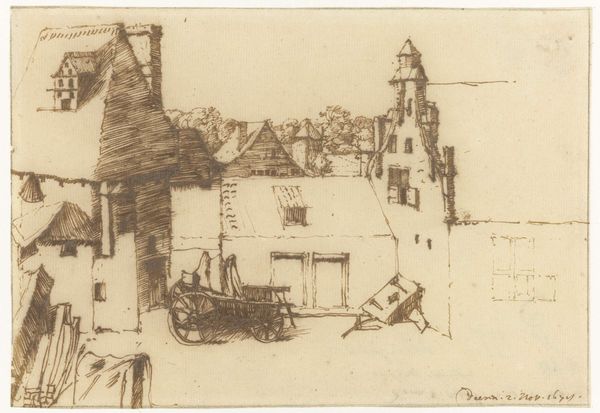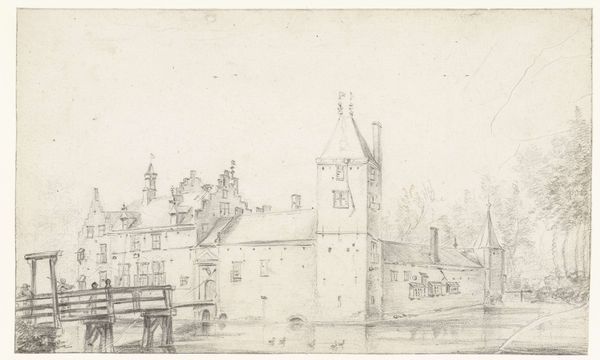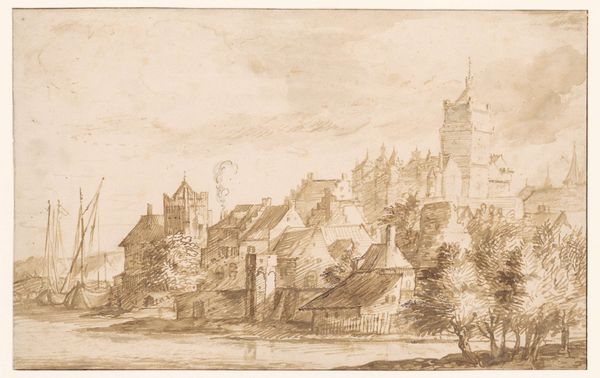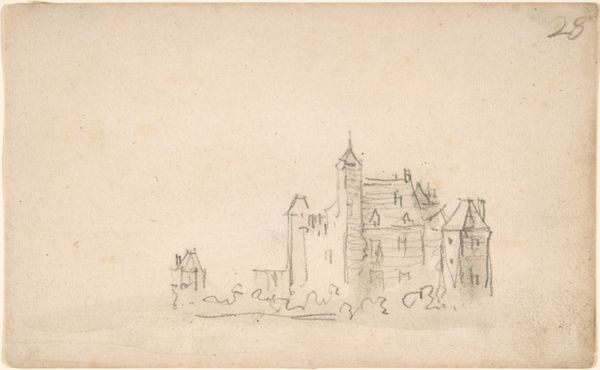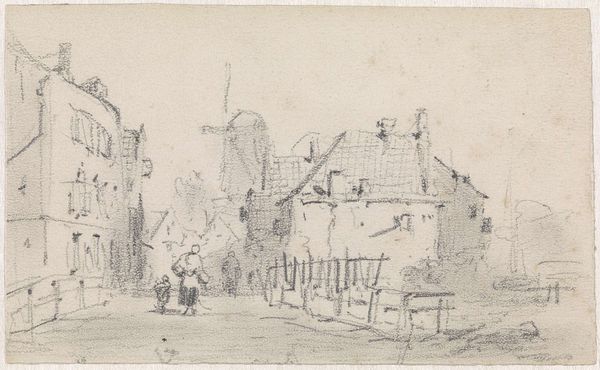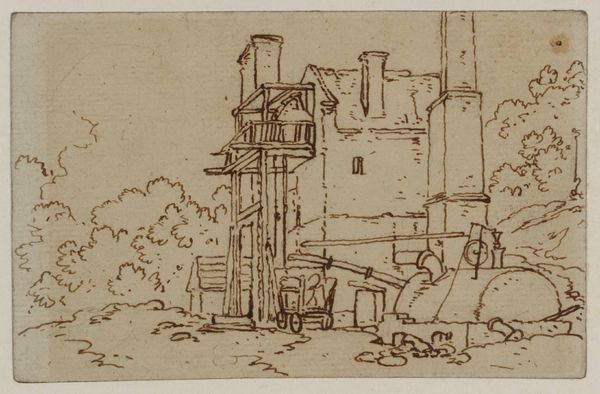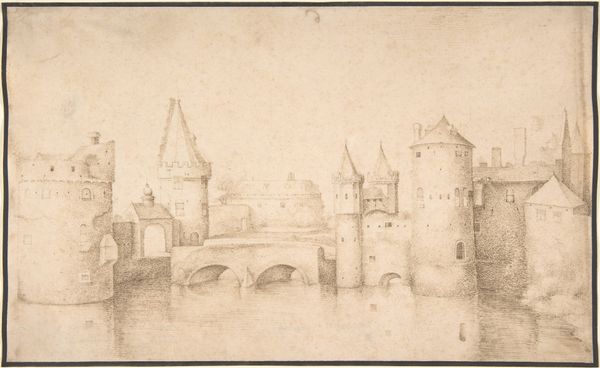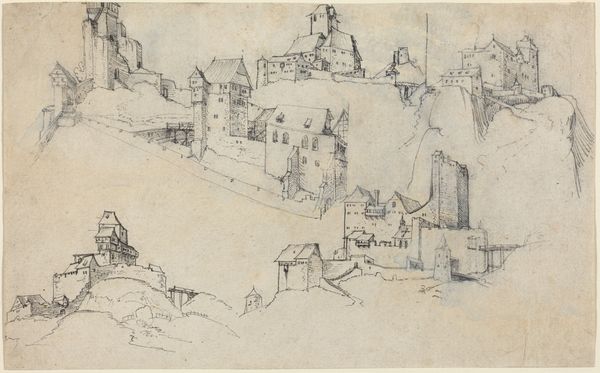
drawing, ink, pen, architecture
#
drawing
#
baroque
#
landscape
#
figuration
#
ink
#
pen-ink sketch
#
pen
#
cityscape
#
architecture
Dimensions: height 143 mm, width 214 mm
Copyright: Rijks Museum: Open Domain
Editor: This is "Zemst," a pen and ink drawing, likely from 1676, by Constantijn Huygens II. It's a rather sparse cityscape. The delicate lines create a slightly eerie atmosphere, almost dreamlike. What do you see in it? Curator: Indeed. Focusing on the intrinsic formal properties, observe how the architectural structures dominate the composition. Huygens employs linear perspective, though not rigorously, creating a subtle recession into space. Note the varied density of lines; denser in the foreground figures and the main building, and gradually lighter to indicate distance, generating depth of field. Editor: It's interesting how the architectural elements, especially that central tower, draw the eye upwards. How does that contribute to the work as a whole? Curator: Precisely. The upward thrust of the tower creates a dynamic visual tension, contrasting with the horizontal lines of the architecture and landscape. This contrast engenders a visual rhythm and adds complexity. Semiotically, what does this ascendance signify in the structure of the piece? Editor: So, you're saying the way he uses lines isn't just descriptive, it's also about creating a sense of movement and perhaps…importance? I hadn't considered it that way, I suppose I was just interpreting it through the scene itself. Curator: Consider how line quality contributes meaning. Is it rough or smooth, thick or thin, dense or sparse? Can line be subjective as well as objective, or does such a perspective limit critical thinking and informed reflection? Editor: Okay, that definitely gives me a lot to think about. I can see the dynamic qualities far better now. Curator: Excellent. Attending to the artist's control of the image structure and manipulation of the media is key to an in-depth reading of an artwork.
Comments
No comments
Be the first to comment and join the conversation on the ultimate creative platform.
